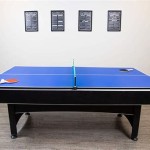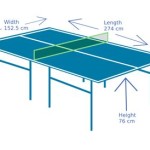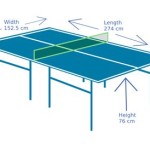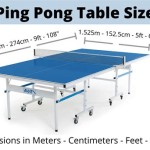Homemade Computer Table Design Template
Creating a functional and aesthetically pleasing computer table doesn't require purchasing expensive, pre-built furniture. With a well-designed template and some basic DIY skills, a customized computer table can be constructed to perfectly fit individual needs and spaces. This article explores the benefits of utilizing a homemade computer table design template and provides guidance on key considerations for template selection and implementation.
One of the primary advantages of using a template is the simplification of the design process. Templates offer pre-determined dimensions and layouts, eliminating the need for complex calculations and design software. This makes the project accessible to individuals with varying levels of carpentry experience. Templates can range from simple sketches to detailed blueprints, offering varying degrees of specificity.
Templates also provide a framework for material estimation. Knowing the dimensions and layout allows for accurate calculations of the required lumber, hardware, and other materials. This minimizes waste and ensures the project stays within budget. Many online resources offer free or low-cost templates, further reducing overall expenses.
Customization is a significant benefit of using a template. While the template provides a basic structure, modifications can be easily implemented to tailor the table to specific requirements. This includes adjusting the dimensions to fit the available space, adding drawers or shelves for storage, and incorporating cable management solutions.
Several factors should be considered when selecting a homemade computer table design template. Ergonomics plays a crucial role in comfort and productivity. The table height should allow for proper posture, and the keyboard and mouse should be positioned at comfortable levels to prevent strain. Templates that incorporate ergonomic principles ensure a healthy and efficient workspace.
Available space is another crucial factor. Measure the designated area carefully to ensure the chosen template fits comfortably within the room. Consider traffic flow and access to other furniture when determining the ideal table size and placement. Templates often provide multiple size options, allowing for flexibility in space utilization.
Storage needs are also paramount. Consider the equipment and accessories that will be placed on or near the table. If multiple monitors, printers, or other peripherals are required, select a template that incorporates sufficient storage space in the form of drawers, shelves, or a raised platform.
Material selection is essential for both aesthetics and durability. Common materials for computer tables include wood, metal, and composite materials. Consider the existing décor and the desired aesthetic when choosing the table material. The template should specify the recommended material and its thickness for optimal structural integrity.
Once a template is chosen, the construction process can begin. Gather the necessary tools and materials, ensuring they align with the template specifications. Cut the materials according to the template dimensions, ensuring precise measurements for proper assembly. Sand all edges to prevent splinters and create a smooth finish.
Assemble the table components according to the template instructions, using appropriate fasteners and adhesives. Ensure all joints are secure and stable. Once the table is assembled, apply a finish or paint to protect the material and enhance the appearance. Consider adding cable management solutions, such as grommets or cable trays, to keep wires organized.
Several online resources offer a vast array of homemade computer table design templates. These resources often categorize templates by size, style, and complexity, simplifying the selection process. User reviews and comments can provide valuable insights into the practicality and ease of construction of various templates.
Beyond basic templates, some resources offer customizable design software. This software allows users to modify existing templates or create their own designs from scratch. This offers greater flexibility for those with specific requirements or a desire for a truly unique design.
Building a computer table using a homemade template can be a rewarding and cost-effective project. By carefully considering ergonomic principles, space constraints, storage needs, and material choices, individuals can create a customized workspace that enhances productivity and complements their personal style. Utilizing available online resources and templates empowers individuals to undertake this project with confidence and achieve satisfying results.
From simple desks to elaborate gaming stations, the possibilities are virtually limitless. Take advantage of the numerous free resources available and transform a simple template into a functional and aesthetically pleasing computer table tailored to individual needs and preferences. The proper template combined with careful planning and execution can result in a custom-built workspace that promotes productivity and complements any home or office environment.

Diy Desk Top Build Tutorial Montreal

Diy L Shaped Desk Step By Instruction Plans

Diy Gaming Desk Simplified Building

Herringbone L Shaped Corner Desk Tutorial Honey Built Home

Diy L Shaped Desk Step By Instruction Plans

How To Build A Giant Corner Desk Woodworking

Pin Page

Architect S Modern Home Office Desk Setup Makeover 2024

Herringbone L Shaped Corner Desk Tutorial Honey Built Home

Herringbone L Shaped Corner Desk Tutorial Honey Built Home
Related Posts








